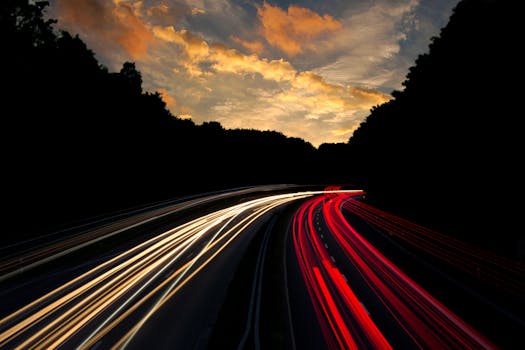Capturing Movement in Landscapes
Imagine standing on the edge of a cliff, watching the waves crash against the rocks below. The scene is stunning, but how do you capture the energy and movement in a photograph? Capturing movement in landscapes is an art that requires skill and an understanding of both your camera settings and the natural environment. It's about more than just pressing the shutter button; it's about telling a story through your images.

Movement in landscapes can be depicted in various ways, whether it's the swaying of trees in the wind, the flow of a river, or even the shifting clouds in the sky. These dynamic elements add life to your photos and can create a sense of time and place. By mastering techniques like long exposure and panning, you can transform ordinary scenes into extraordinary works of art.
So what are some different methods to capture movement in landscape photography? Think of camera settings, equipment choices, and specific techniques that can help you achieve stunning results.
Understanding Camera Settings
The first step in capturing movement is understanding your camera settings. Shutter speed plays a crucial role in how motion is portrayed. A slow shutter speed will blur moving elements, creating a sense of flow, while a fast shutter speed will freeze action, capturing every detail. For example, using a slow shutter speed (e.g., 1/30th of a second) can make water look silky smooth, while a fast shutter speed (e.g., 1/1000th of a second) can capture each droplet in mid-air.
Aperture and ISO settings also impact your photos. A smaller aperture (higher f-number) increases depth of field but requires more light, which may necessitate a higher ISO setting or longer exposure time. Conversely, a larger aperture (lower f-number) allows more light but reduces depth of field.
Experimenting with different combinations of these settings will help you find the perfect balance for capturing movement. Utilize manual mode to have full control over your camera and practice adjusting these settings to see how they affect your images.
Using Tripods and Stabilization
A tripod is an essential tool for landscape photographers aiming to capture movement. It stabilizes your camera during long exposures, preventing unwanted blur caused by hand movement. Choose a sturdy tripod that can withstand outdoor conditions and ensure it’s properly set up before shooting.
In addition to tripods, consider using remote shutters or timer functions to minimize camera shake further. Some cameras also offer image stabilization features that can be useful when shooting handheld. However, for long exposures or precision work, a tripod remains indispensable.
Techniques for Capturing Movement
There are several techniques to capture movement effectively:
- Long Exposure: Use slow shutter speeds to blur moving elements like water or clouds. This technique creates a dreamy effect that emphasizes motion.
- Panning: Follow a moving subject with your camera while using a slower shutter speed. This keeps the subject sharp while blurring the background, highlighting the motion.
- Time-Lapse: Capture a series of images over time and compile them into a video. This shows changes and movements that occur gradually.
Each technique requires practice and experimentation. Try different approaches based on the specific scene and desired outcome.
Choosing the Right Equipment
Your choice of equipment can significantly impact your ability to capture movement in landscapes. While any DSLR or mirrorless camera with manual controls can be used, certain accessories enhance your capabilities:
- ND Filters: Neutral Density filters reduce light entering the lens, allowing for longer exposures even in bright conditions.
- Remote Shutters: These devices let you trigger the camera without touching it, reducing the risk of shake during long exposures.
- Lenses: Wide-angle lenses are often preferred for landscapes as they capture more of the scene and provide better depth of field control.
Editing Techniques
Improving and processing plays a vital role in enhancing photos that capture movement. Software like Adobe Lightroom and Photoshop offer tools to adjust exposure, contrast, and color balance. You can also use these programs to blend multiple exposures for HDR effects or to remove unwanted elements from your images.
A popular technique is using layers in Photoshop to combine different exposures or apply selective adjustments without affecting the entire image. This gives you greater control over how movement is portrayed in your final photo.
Capturing movement in landscapes involves mastering various techniques and understanding how different elements interact within a scene. By experimenting with camera settings, utilizing stabilization tools like tripods, and applying specific photography methods such as long exposure or panning, you can create dynamic and captivating images that tell a story.